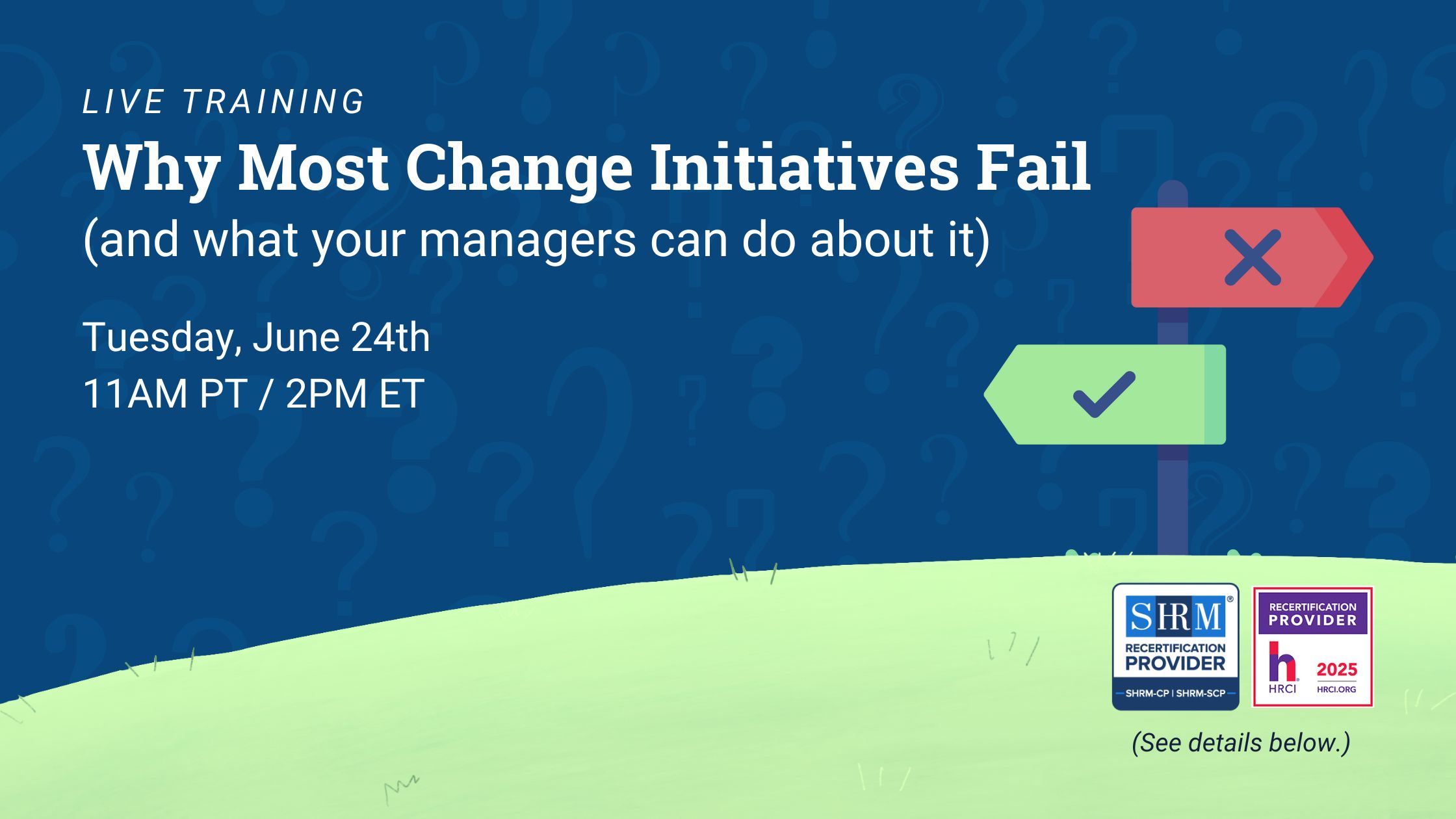Every interaction a potential or existing employee has with you is an opportunity to strengthen your brand—or weaken it. Which direction it takes is based on how your organization treats the relationship as a whole. The employer-employee relationship is based not only on touchpoints or milestones such as job offers, reviews, promotions, layoffs, and exit interviews but also on all the moments in between. Let’s take a look at how to build your employer branding strategy throughout the employee lifecycle.
What Is Employer Branding and Why Is it Important?
Employer branding is the marketing and reputation of an organization’s employee experience, from beginning to end. It includes candidate experience from the application phase through offer or rejection and onboarding, career development, and offboarding, whether resulting from a voluntary or involuntary exit. To have a strong employer brand, a business must have an employer branding strategy that considers each of these steps in the benefits it offers its applicants and employees. Having an employer branding strategy is important because a positive reputation helps a company attract and retain top talent. It allows employees to grow in their careers with the organization and use the knowledge and skills they gain over time to help the employer achieve its goals. A strong employer brand can also help a business attract and maintain its customer base.
Conversely, a negative employer brand can make it difficult to attract talent. Poor candidate experience can turn off potential hires and a lack of opportunity for growth can make it difficult for a company to both win over talent and keep them. And if employees are not properly taken care of following a layoff, the employer brand can be severely damaged. All of these aspects can contribute to a company’s stability, which is why a negative employer brand can also have a detrimental effect on its ability to acquire and retain customers.
10 Employer Branding Strategies
In order to have a strong employer brand, you must consistently and transparently offer employees and applicants what they need to be successful while interacting with your organization. Here are some strategies to make these efforts fruitful.
1. Survey your employees and read your company reviews
Knowing where you are gives you a starting point for where your company needs to go. Find out how your employees feel about working for you, about their opportunities for growth, and whether they plan to stay with you to develop their careers. Also look on company review sites like Glassdoor to see how applicants and past and present employees view you as an employer. Then, take the learnings and create an action plan to address them, if needed.
2. Evaluate your organization’s candidate experience and onboarding processes
If the process to become an employee is a challenging or unpleasant one, not only may candidates give up and decide not to finish their applications, but word may spread and deter future applicants. Look at the journey a candidate takes from learning about your company and a particular role, through the application stage, the interview, communications, and offer or rejection. Also, note how employees are onboarded after they are hired. When employees are given what they need to be successful during their first 90 days, they’re more likely to stay with you.
3. Review your company’s benefits
When employees are mentally and physically healthy, have and are able and encouraged to use time off, and have plenty of opportunities to grow with you, they are more likely to be devoted to your business and its success. Make sure you have ample health benefits, PTO, and career development programs that foster a healthy, engaged, and motivated workforce.
4. Ensure you have an established offboarding process
Offboarding consists of the steps taken when an employee leaves a company, whether through voluntary resignation, termination, or layoff. It’s vital that your organization has a process that includes exit interviews, severance and outplacement benefits, and the transfer of knowledge and/or responsibilities to other colleagues. Having an offboarding plan can reduce risk and ensure business continuity, as well as offer learning opportunities. And when employees have a smooth exit from the company, they’re more likely to recommend the employer to others or return should the opportunity arise.
5. Implement processes and benefits that encourage interest in working at and growing with your company
Flexible work schedules, options for hybrid or remote work, and learning and development opportunities can all contribute to a positive employer brand. Look for solutions that create a healthy work-life balance and that enable employees to build their careers with you, whether by moving up in an established career path or by gaining new skills for an entirely different role within your organization.
6. Communicate the processes and benefits with your workforce and on your career page
Each of these steps and benefits should be transparent to employees. Make sure they are communicated by department leaders and on your company intranet so that any member of your organization can reference the information at any time. Regularly remind employees about your offerings and encourage them to take part. Also, highlight the benefits on your company’s career page or site to boost your employer brand.
7. Showcase employee testimonials and success stories
Harness the power of employee advocacy by showcasing testimonials and success stories on your company website, social media platforms, and recruitment materials. Highlight current employees’ experiences, achievements, and career growth to provide potential candidates with insights into your workplace culture and opportunities for advancement. Encourage employees to share their positive experiences online and participate in employer branding initiatives such as employee referral programs. Authentic testimonials from satisfied employees serve as compelling endorsements of your organization as an employer of choice.
8. Foster employee development and growth opportunities
Investing in the professional development of your employees not only enhances their skills and expertise but also strengthens your employer brand. Offer opportunities for training, workshops, certifications, and mentorship programs that allow employees to gain more knowledge and advance their careers within your organization. Provide clear pathways for progression and advancement, whether through promotions, lateral moves, or special projects. By demonstrating a commitment to the growth and advancement of your employees, you attract ambitious talent and foster loyalty and retention among your workforce.
9. Emphasize diversity, equity, and inclusion initiatives
In today’s workforce, diversity, equity, and inclusion (DEI) are crucial aspects of any successful employer brand. Actively promote your organization’s commitment to diversity by highlighting initiatives such as diversity training programs, diverse hiring practices, and affinity groups for underrepresented employees. Showcase success stories of a diverse variety of employees thriving within your company culture. By prioritizing DEI efforts, you attract top talent from various demographics and foster a more inclusive and innovative work environment.
10. Embrace corporate social responsibility (CSR)
Integrate corporate social responsibility initiatives into your employer branding strategy to showcase your organization’s commitment to positively impacting society and the environment. Engage employees in volunteer activities, community service projects, and sustainability efforts that align with your company’s values and mission. Highlight your CSR initiatives on your website, social media channels, and recruitment materials to demonstrate your organization’s dedication to social and environmental stewardship. By engaging in meaningful CSR activities, you attract socially conscious talent and contribute to building a positive employer brand that resonates with employees and stakeholders alike.
 How Improving Employer Branding Can Help Your Business
How Improving Employer Branding Can Help Your Business
Recruiting and hiring
Imagine having a candidate you choose not to hire becoming an advocate of your brand. It can happen, and you can see the evidence on review sites such as Glassdoor. The converse is also true. Word can spread about a poor interview experience, lack of communication, or insulting rejection letters, which can affect not only future hiring by deterring quality candidates from applying, but also your customer base. Virgin Media lost about $5 million in revenue in a year due to its poor candidate experience, as a large percentage of its candidates were also customers—who then switched to other providers.
Implementing policies and procedures for nurturing candidates from the moment they apply through to the moment you either offer or decline them a job and beyond is an easy step that will more than return on its investment. Candidate experience tools are another way to help cultivate the employer-employee relationship with those you don’t hire, by providing resources for those candidates to improve their job seeker skills and continue their search. With this offering, your organization demonstrates that it cares about their future, is a high-caliber employer, and is a brand worth supporting—all of which build your employer brand.
Internal mobility and upskilling
Some companies think that their responsibility for nurturing employees is over once they’ve onboarded them. But caring for your employees goes beyond providing a salary and benefits. Providing opportunities for improving or acquiring new skills and to move about the organization both laterally and vertically creates an environment where employees feel inspired to grow their careers with you. Employees lacking opportunities to move and grow within the organization will likely move on to external opportunities within a few years. Those frequent departures increase the costs of hiring, onboarding and training as new employees are brought in from outside the organization.
You may be surprised by the many skills your employees have that are not necessarily applicable to their current roles. Having an internal mobility strategy that includes assessments can help an organization make the best use of the talent it already has by identifying employees’ strengths, skills, and interests that could be applied to additional roles throughout the organization. When a company uses its own talent, there are added benefits. In addition to reduced costs of hiring and onboarding, talent from within the organization will already have knowledge of the company that can bring helpful insight to a new role.
A company using a career mobility program, including career coaching and other career development resources, also has the opportunity to build its leadership from within as employees move up the ranks and across the organization, taking with them the culture and values that have been ingrained from the start. Plus, employees at all levels stay motivated and engaged, knowing that they can continue to contribute to the company’s success, while also advancing their skills and developing their careers. Happy employees can be your best brand ambassadors, so cultivating their careers is a win-win strategy, and a boost to your employer branding.
Offboarding
Of course, some employees will leave your organization, either by choice, or through a reduction in force (RIF) or other event. How those departures are handled can strongly affect your employer brand. Consider these events at the end of the employee lifecycle when thinking about how to build your employer branding strategy.
Communicating news of the departures internally must be done carefully and transparently, before negative messaging has an opportunity to spread throughout and outside the company. If you have a layoff event, preparation and an established process will help you retain the respect of your employees and your brand reputation. Supporting your impacted employees following a layoff is just as important as it is to nurture them throughout the hiring process and during their tenure with your company. Providing outplacement services, which includes one-on-one career coaching and job seeker resources and tools, demonstrates that you care about the welfare of your employees even after they depart. Providing outplacement services also gives them a faster path forward to meaningful new employment, and can help you maintain a positive relationship with them. Through effective communication and considerations for your departing and remaining employees, you can build your employer brand, even during offboarding.
7 Employer Branding Strategies From Existing Businesses
Employer branding has become increasingly crucial for companies seeking to attract and retain quality talent in today’s competitive job market. A strong employer brand helps in recruitment efforts and fosters employee engagement and loyalty. Here are seven examples of companies that excel in employer branding:
1. Google
Google is renowned for its exceptional employer branding efforts. The company’s career website showcases its vibrant company culture through videos, employee testimonials, and descriptions of perks such as free meals, on-site wellness and fitness centers, and opportunities for professional development. Google’s reputation for innovation and employee empowerment has helped it consistently rank among the top places to work globally.
2. Salesforce
Salesforce prioritizes its employees’ well-being and personal growth, evident in its robust employer branding initiatives. The company emphasizes its inclusive culture, commitment to philanthropy, and focus on diversity and equality. Salesforce leverages social media platforms effectively to share employee stories, highlight company values, and showcase its dynamic workplace culture, attracting top talent who align with its mission and values.
3. Apple
Apple’s employer branding strategy revolves around its reputation as an industry leader in innovation and design. The company emphasizes its commitment to creating revolutionary products and fostering a collaborative and inclusive work environment where individuality, creativity, and boundary-pushing are encouraged. Apple’s career website features employee testimonials, insights into its diverse teams, and descriptions of its unique perks and benefits, such as generous parental leave and educational assistance programs.
4. HubSpot
HubSpot is recognized for its exceptional employer branding efforts centered on transparency, employee empowerment, and professional growth. The company’s career website features engaging content, including blog posts, podcasts, and videos that offer insights into its culture, values, and workplace practices. HubSpot actively promotes its commitment to diversity and inclusion, remote work opportunities, and flexible scheduling, resonating with prospective employees seeking a supportive and inclusive work environment.
5. Netflix
Netflix stands out for its distinctive employer branding approach emphasizing creativity, autonomy, and a culture of “freedom and responsibility.” The company’s career website showcases its unique culture through employee stories, behind-the-scenes glimpses of its innovative projects, and descriptions of its unconventional benefits, such as unlimited vacation time and parental leave policies. Netflix’s employer branding efforts reflect its commitment to fostering a dynamic, inclusive workplace where employees are empowered to take risks and drive impact.
6. Microsoft
Microsoft’s employer branding strategy focuses on its mission to empower everyone on the planet to achieve more. The company highlights its diverse and inclusive culture, commitment to sustainability, and efforts to drive social impact through technology. Microsoft leverages its social media presence to showcase employee achievements, share insights into its culture and values, and engage with prospective candidates. The company’s emphasis on continuous learning and development opportunities resonates with individuals seeking a challenging and rewarding career in technology.
7. Airbnb
Airbnb’s employer branding efforts revolve around its mission to create a world where anyone can belong anywhere. The company emphasizes its culture of belonging, diversity, and inclusion, evident in its commitment to fostering a sense of community among employees and supporting various employee resource groups. Airbnb’s career website features employee testimonials, stories of impact, and descriptions of its unique benefits, such as travel credits and experiences, reflecting its commitment to creating memorable experiences for guests and employees alike.
Employer Branding Strategy: A Summary
Implementing new engagement programs for all stages of the employee lifecycle can build your employer brand with an immeasurable payoff. Once these programs are in place, using them and making them a standard part of your hiring and management procedures is easy. Best of all, you’ll gain a motivated and engaged workforce and retain respect for your brand—both of which can only contribute to further success.
In every stage of the employee lifecycle, INTOO helps employers protect their brand through effective candidate experience, career mobility, and outplacement services. Contact us to learn how we can make a difference for you and your employees.
Robyn Kern is a seasoned business writer who has written in the HR, education, technology, and nonprofit spaces. She writes about topics including outplacement, layoffs, career development, internal mobility, candidate experience, succession planning, talent acquisition, and more, with the goal of surfacing workforce trends and educating the HR community on these key topics. Her work has been featured on hrforhr.org and trainingindustry.com.



 How Improving Employer Branding Can Help Your Business
How Improving Employer Branding Can Help Your Business








